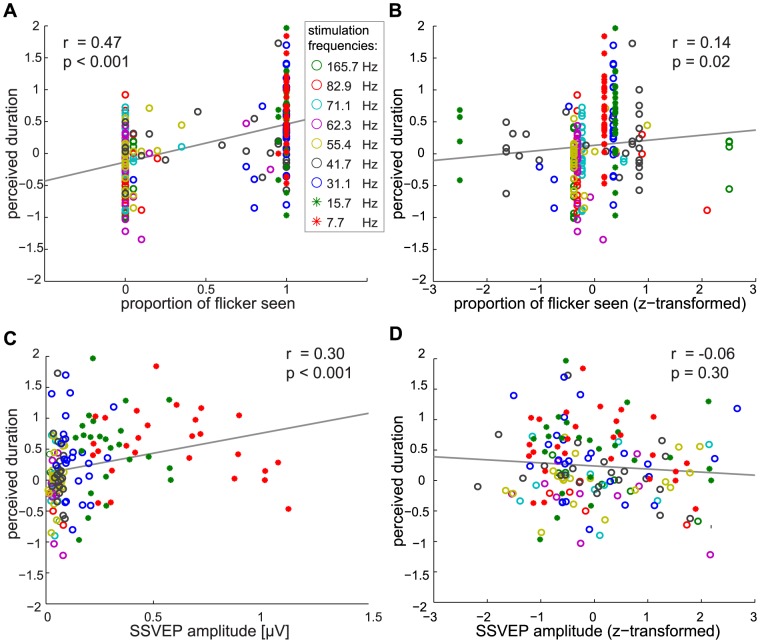Figure 5. Correlation Analyses.
A: Correlations between proportion of trials seen as flicker, and perceived duration. Although very high and low frequencies did not show great variation in perception of flicker, overall, conscious perception of flicker led to longer perceived duration. (r = 0.47; p<0.001). B After a z-transform, which removed all variance between frequencies while keeping the variance within frequencies, a significant correlation remained between flicker perception and perceived duration (r = 0.14; p = 0.02). This result indicates that participants who perceived a given frequency as flicker perceived stimulus duration as longer than those who did not perceive this frequency as flicker. C: SSVEP amplitudes evoked by each flicker frequency significantly correlated with perceived duration (r = 0.30; p<0.001). D: A z-transform of SSVEP amplitudes, which removes the between-frequency effect, removed the correlation between SSVEP and subjective duration (r = −0.06; p = 0.30), indicating that participants with stronger SSVEP at a given frequency did not perceive stimuli of that frequency as longer.

